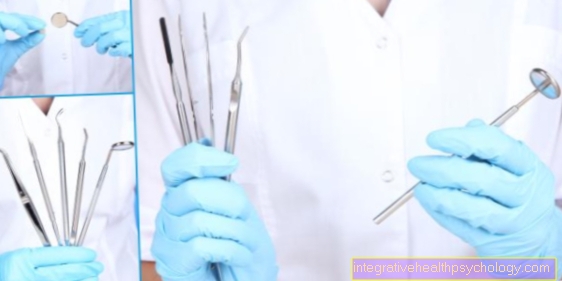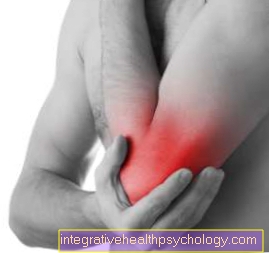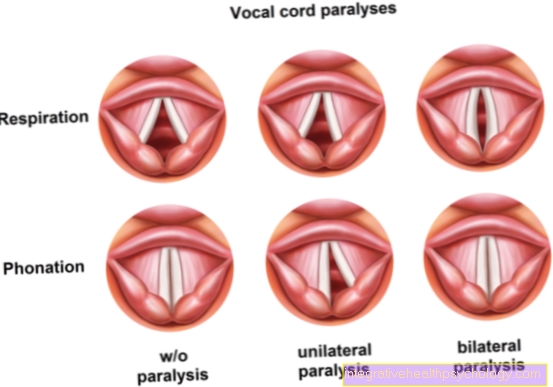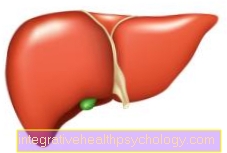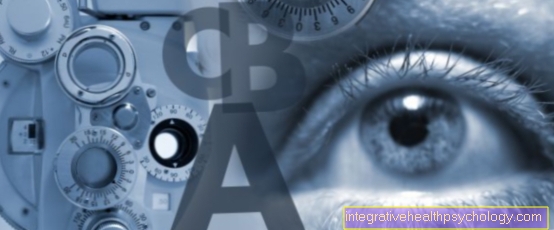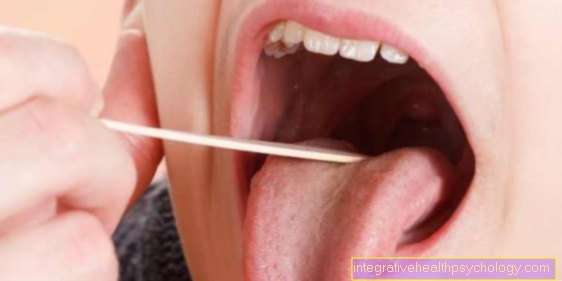What is the life expectancy with atrial fibrillation?
introduction
The life expectancy of atrial fibrillation depends on the form of the cardiac arrhythmia and the treatment options. If there is also a heart disease in addition to atrial fibrillation, life expectancy is reduced compared to that of people with healthy hearts. However, due to the treatment options available today, life expectancy is significantly higher than it was 50 years ago.

Does atrial fibrillation reduce my life expectancy?
There are different forms of atrial fibrillation due to different causes. Life expectancy depends heavily on accompanying heart disease.
Coronary artery disease (CHD) is the main cause of atrial fibrillation and can be positively influenced by a healthy lifestyle.With a weakened heart and atrial fibrillation, mortality is increased. If you are younger than 65 years old and suffer from atrial fibrillation and your heart is otherwise healthy, you have a similar life expectancy as people without atrial fibrillation despite the fibrillation.
Read more about this under
- Cause of coronary artery disease
- Life expectancy in coronary heart disease
Which types of atrial fibrillation have a particularly negative impact on my life expectancy?
Atrial fibrillation is differentiated according to the time and duration of occurrence:
- Paroxysmal atrial fibrillation (occurs in attacks and goes away on its own)
- Persistent atrial fibrillation (lasts longer than 7 days, can be treated)
- Permanent atrial fibrillation (persists and is resistant to therapy)
The paroxysmal atrial fibrillation (paroxysmal = attack-like) occurs suddenly and usually disappears on its own within 48 hours and a maximum of 7 days. Paroxysmal atrial fibrillation very often goes undetected. It is believed that people with paroxysmal atrial fibrillation have a similar risk of stroke as patients with permanent atrial fibrillation. The symptoms of atrial fibrillation can be unspecific: irregular heartbeat and pulse, dizziness, sweating, shortness of breath, inner restlessness or fatigue. As a result, this shape, which quickly disappears by itself, is often overlooked. Paroxysmal atrial fibrillation can become chronic over time.
Persistent atrial fibrillation (persistent = continuing / lasting) lasts more than 7 days and can be ended with medical means. Long-lasting persistent atrial fibrillation can last more than a year without treatment. This form of the disease is mostly treated with drug or electrical cardioversion.
Permanent atrial fibrillation (permanent = permanent) is diagnosed when the patient accepts persistence of the atrial fibrillation and does not give treatment that normalizes the rhythm. If atrial fibrillation lasts longer than 48 hours, the risk of developing a blood clot is greatly increased. The blood clots can loosen and be washed away via the vessels, they can then block the blood vessels (Embolisms) cause. If an embolism or even a stroke occurs, it is bad for life expectancy. It is therefore important to diagnose atrial fibrillation early and treat it specifically, with blood thinning and restoring the rhythm if necessary. The duration of atrial fibrillation is particularly important for life expectancy, as it has a great influence on the risk of embolism and strokes. Long-lasting atrial fibrillation without treatment has a negative impact on life expectancy.
Atrial fibrillation can also be divided into “classic valvular atrial fibrillation” and “non-valvular atrial fibrillation” (valvular = pertaining to a heart valve). This historical subdivision establishes a connection between atrial fibrillation and pathological changes in the heart valves. In "classic valvular atrial fibrillation" there is atrial fibrillation when the mitral valve is narrowed (Mitral stenosis) or after a mechanical heart valve replacement. These heart valve diseases, which can be assigned to this definition, have an increased risk of thromboembolic events compared to "non-valvular atrial fibrillation".
Read more about this under
- Pulmonary Embolism Symptoms
- Stroke - What Are The Signs?
What can I do to positively influence my life expectancy if I have atrial fibrillation?
In order to have a positive influence on life expectancy with existing atrial fibrillation, two points are important: appropriate therapy and a healthy lifestyle. If atrial fibrillation is known, a cardiologist must be visited regularly and the heart examined thoroughly. It is important that inspection visits are taken seriously. If you get medication postponed, you have to take it strictly as directed by the doctor.
A healthy lifestyle also plays an important role. If the heart is healthy, the life expectancy with atrial fibrillation significantly improves. A balanced, healthy diet and regular exercise are extremely healthy for a healthy heart. Alcohol and nicotine should be avoided as much as possible. Bad food, lack of exercise, alcohol and cigarettes promote the development of vascular calcification (arteriosclerosis) and finally coronary artery disease (CHD), the main risk factor for atrial fibrillation. A healthy lifestyle effectively helps the heart and has a very positive overall effect on life expectancy.
Read more about this under
- Wholesome nutrition
- Causes of atherosclerosis
Can a pacemaker increase my life expectancy?
The life expectancy of patients with a pacemaker for atrial fibrillation has improved significantly over the past thirty years. Cardiac pacemaker operations are carried out routinely in German hospitals and the pacemaker devices usually reliably detect life-threatening cardiac actions, so that the pacemaker cancels out arrhythmias through targeted electrical stimulation. The pacemaker controls the heart rhythm and corrects existing rhythm disturbances. Through rhythm control and therapy with the aid of a pacemaker, dangerous complications of atrial fibrillation such as embolism and strokes can be prevented and life expectancy can be positively influenced.
Read more about this under
- Pacemaker
- Therapy of cardiac arrhythmias
Can blood thinning have a positive effect on my life expectancy?
Blood-thinning medications are indicated for atrial fibrillation when there is a risk of embolism and stroke. In the worst case, embolisms and strokes can be fatal or cause severe disabilities that have a negative impact on life expectancy. If one suffers from atrial fibrillation and has an increased risk of embolism and strokes, blood thinning can definitely have a positive effect on life expectancy.
Read more about this under blood thinner
If I do everything optimally, can I increase my life expectancy to a normal level?
It is not possible to prevent atrial fibrillation per se, but it is possible to favorably influence diseases that cause atrial fibrillation. A balanced diet, exercise and the avoidance of stimulants such as alcohol and nicotine significantly reduce the risk of coronary heart disease, the main risk of atrial fibrillation. A healthy lifestyle has a positive effect on the cardiovascular system and can increase life expectancy.







